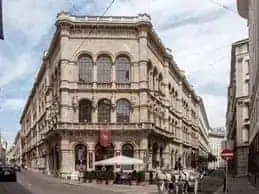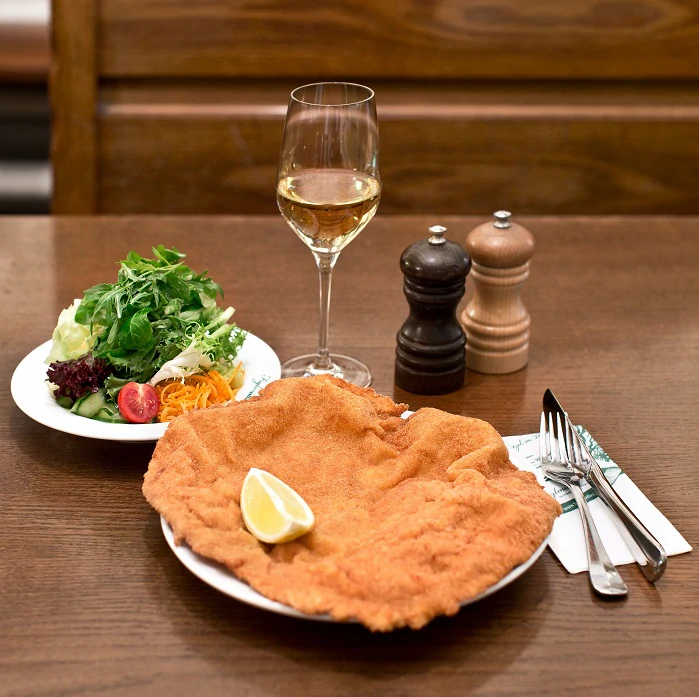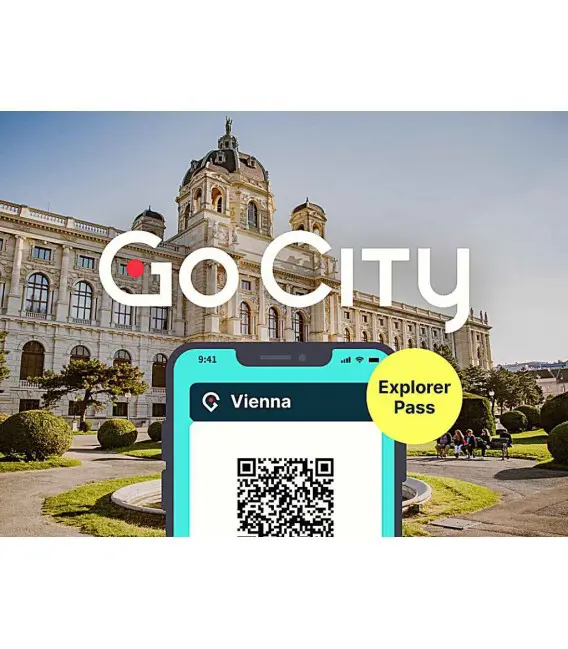Where is Café Central located? When would it be founded and who was the architect? Which visitors did Café Central attract? What makes a visit to Café Central an experience these days?
There are coffee houses and there is the Café Central they say in Vienna. Café Central is the number 1 café and the most famous in the world. It is located at Herrengasse 14 in the center of Vienna in a beautiful building in the style of the Tuscan New Renaissance. The Viennese Ringstrasse architect Heinrich von Ferstel created this Italianate building in 1860. He had been inspired by Italian Trecento architecture during a longer trip to Italy and wanted to implement this in Vienna as well. Ferstel also built the University of Vienna, the Votive Church and the University as well as the Museum of Applied Arts (MAK). This was followed in 1876 by the founding of Café Central by the Pach brothers. Initially, the old stock exchange halls and the Austro-Hungarian Bank were located in the place of the café. After Café Griensteidl, the former meeting place of the literati, was demolished, they moved just a few hundred meters away to Café Central . Thus, in 1897, the café’s flight of fancy began. Famous regulars included Peter Altenberg, Anton Kuh, Adolf Loos, Sigmund Freud, Egon Friedell, Hugo von Hofmannsthal, Hermann Bahr, Alfred Adler, Oskar Kokoschka, Stefan Zweig, Alfred Polgar, Leo Perutz, Robert Musil, Karl Kraus, Felix Salten, Richard Beer-Hofmann and Arthur Schnitzler. Everyone who was anyone in Vienna at the turn of the century could be found at Café Central, where people discussed, philosophized and often spent more time than at home over cake, coffee and cigars, and some guests even gave their home address as Central (Peter Altenberg) . It was an international meeting place and there were 250 newspapers in 22 languages. Chess was played with pleasure, especially by Mr. Bronstein, alias Leon Trotsky, who lived as an emigrant in Vienna from 1907 until the end of the First World War. In 1943, the portico was destroyed in the course of World War 2 and the café was closed. It fell into disrepair until it was renovated and reopened in 1975. Another renovation took place in 1986. Nowadays, visitors to Vienna are still greeted by the same atmosphere as at the turn of the century . A Peter Altenberg figure greets guests at the entrance, after the usually long wait. No other café in Vienna has a longer queue. Sometimes a pianist plays in the evening and in this ambience you can taste the Viennese coffee specialties as well as the own Café Central delicacies of the patisserie . There is also a Café Central cake. Café Central offers not only sweets, but also typical Viennese dishes, such as the famous Wiener Schnitzel, a beef goulash, Krautfleckerl or a fried chicken . A classic Viennese dessert – the Kaiserschmarrn may not be missing either. This makes Café Central a great place to go in the morning, at lunchtime and in the evening. The Viennese like to go there early in the morning, around 8am you can have breakfast in peace and quiet at Café Central, when the proportion of locals is around 90%, two hours later this changes to a tourist proportion of 90% and the Viennese can already be found at their workplace. Time Travel Tip: After a visit to Café Central, be sure to stroll through the Ferstel Passage onto the Freyung.
Vienna has only a few passages of this kind. Exquisite stores invite you in for chocolate, wine, ham and other delicacies . Image source: https://de.m.wikipedia.org/wiki/Datei:Palais_Ferstel_Cafe_Central.jpg



